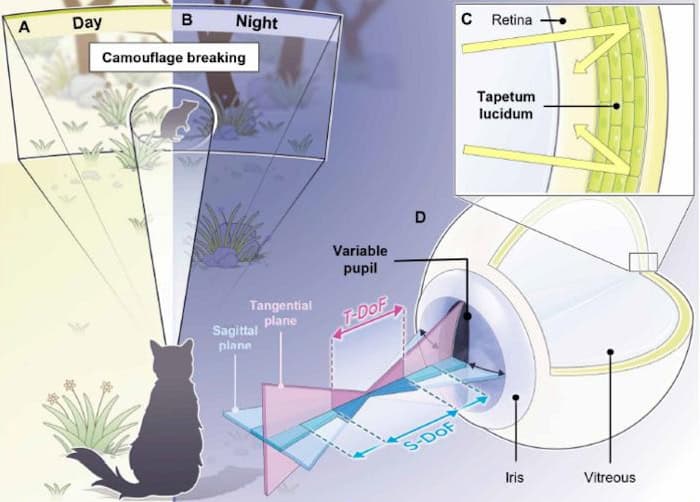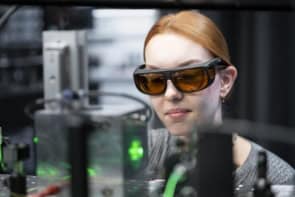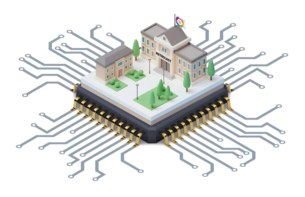
A novel camera inspired by structures within cats’ eyes could be employed in autonomous vehicles, drones and surveillance systems – applications where precise object detection in varied light conditions and complex backgrounds is critical.
One key feature of the new device is the use of a vertically elongated slit, like the pupils of cats’ eyes, which are different from those of other mammals, explains Minseok Kim of the Gwangju Institute of Science and Technology in Korea. As in a cat’s eye, this pupil creates an asymmetric depth of focus when it dilates and contracts, allowing the camera to blur out backgrounds and focus sharply on objects. Another feature is a metal reflector that enables more efficient light absorption in low-light settings. This mimics the tapetum lucidum, a mirror-like structure that gives cats’ eyes their characteristic glow. It reflects incident light back into the retina, allowing it to amplify light.
“The result is a camera that works well in both bright and low-light environments, allowing it to capture high-sensitivity images without the need for complex software post-processing,” Kim says.
Mimicking animal eyes
Kim and colleagues have been working on mimicking the eyes of various animals for several years. Some of their recent studies include structures inspired by fish eyes, fiddler crab eyes, cuttlefish eyes and avian eyes. They decided to work on this latest project with the aim of overcoming the limitations of current cameras systems, in particular, their difficulty in handling very low or very bright lighting conditions. They also wanted to do away with the post-processing image software required to better distinguish objects from their backgrounds.
One of the main difficulties that the researchers had to overcome in this study was to simplify the intricate structure of the tapetum lucidum. Instead of replicating it exactly, they used a metal reflector placed beneath a hemispherical silicon photodiode array, which reduces excessive light and enhances photosensitivity. This design allows for clear focusing under bright light and improved sensitivity in dim conditions.
“Another challenge was to create a vertical pupil that could mimic the cat’s ability to focus sharply on an object while blurring the background,” says Kim. “We were able to construct the vertical aperture using a 3D printer, but our future work will focus on making this pupil dynamic so it can automatically adjust its size in response to changing light conditions.”
Many application areas
The research could significantly improve technologies that rely on high-performance imaging in difficult lighting conditions, Kim tells Physics World. The team expects the system to be highly useful in autonomous vehicles, where precise object detection is critical for safe navigation.

Artificial eye has the potential to outperform human vision
“It could also be applied to drones and surveillance systems that operate in various lighting environments, as well as in military applications where camouflage-breaking capabilities are essential,” Kim adds. “The system could also find use in medical imaging, where the ability to capture high-sensitivity, real-time images without extensive software processing is crucial.”
The researchers now plan to further optimize their camera’s pixel density – which they admit is quite low at the moment – and its resolution to improve image quality. “We also aim to conduct more real-world tests, particularly in applications such as autonomous driving and robotic surveillance, to evaluate how the system performs in practical settings,” says Kim. “Lastly, we are looking into binocular object recognition systems so that the camera can handle more complex visual tasks.”
The study is detailed in Science Advances.



